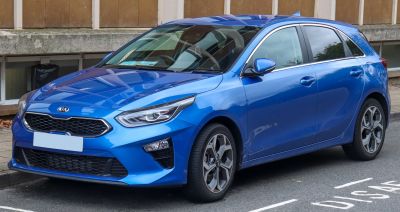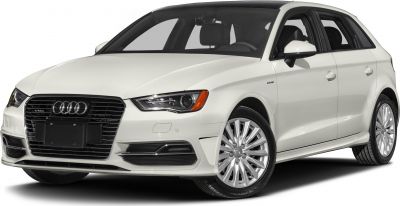 2012 Hyundai i30 II Dimensions, Size & Specs
2012 Hyundai i30 II Dimensions, Size & SpecsMeasurements of the 2012 Hyundai i30 II, engineered for optimal performance and comfort
| Dimensions | |
|---|---|
| Length: | 4300 mm169.3 in14.1 ft |
| Width: | 1780 mm70.1 in5.8 ft |
| Height: | 1470 mm57.9 in4.8 ft |
| Ground Clearance: | 140 mm5.5 in0.5 ft |
| Trunk Capacity: | 378 liter13.3 cu ft |
| Trunk Capacity (Max): | 1316 liter46.5 cu ft |
| Weight Specifications | |
| Curb Weight: | 1185-1310 kg2612-2888 lbs |
| Maximal permitted Weight: | 1820-1940 kg4012-4277 lbs |
| Tire Specifications | |
| Rims Sizes: | 15-inch rims:
|
| Tire Sizes: |
|
The Hyundai i30 II is the second-generation model of Hyundai’s popular compact hatchback, produced between 2011 and 2015, with model years starting from 2012. This generation features a modern and practical design optimized for urban and suburban driving. Measuring 4,300 mm (169.3 inches) in length and 1,780 mm (70.1 inches) in width, the i30 II offers a balanced exterior footprint that comfortably fits in tight city spaces while still providing ample cabin room. The vehicle height stands at 1,470 mm (57.9 inches), contributing to a sleek profile and aerodynamic efficiency.
Weighing between 1,185 and 1,310 kilograms (2,612 to 2,889 pounds) in curb weight, the i30 II remains relatively lightweight for its class, aiding in fuel efficiency and nimble handling. The maximum permissible weight ranges from 1,820 to 1,940 kilograms (4,013 to 4,280 pounds), reflecting the vehicle’s capacity for passengers and cargo combined. Ground clearance is set at 140 mm (5.5 inches), allowing for confident navigation of urban road irregularities without sacrificing ride comfort.
Storage capacity is one of the i30 II’s strong points, with a luggage space of 378 liters (13.3 cubic feet) under normal conditions. When the rear seats are folded down, the cargo area expands significantly to 1,316 liters (46.5 cubic feet), providing versatility for transporting larger items or luggage during trips.
The i30 II comes equipped with various wheel and tire options to suit different driving preferences and conditions. Rim sizes range from 6.0J x 15 inches, 6.5J x 16 inches, 7.0J x 17 inches, paired with tire sizes including 195/65 R15, 205/55 R16, and 225/45 R17. This array allows for a good balance between comfort, grip, and performance.
Overall, the Hyundai i30 II (2012-2015) hatchback stands out as a reliable and practical choice in the compact segment. Its well-rounded dimensions, reasonable weight, ample luggage room, and configurable wheel options make it suitable for daily commuting, family use, and light cargo transport.
Discover the standout features that make the 2012 Hyundai i30 II a leader in its class
Have a question? Please check our knowledgebase first.
The Hyundai i30 II generation, produced between 2011 and 2015, features practical dimensions ideal for a compact hatchback. It measures 4300 mm (169.3 inches) in length, 1780 mm (70.1 inches) in width, and 1470 mm (57.9 inches) in height. These dimensions contribute to its balanced presence on the road, making it roomy enough for comfortable passenger accommodation while remaining compact enough for urban driving and parking.
The curb weight of the Hyundai i30 II ranges from 1185 kg to 1310 kg (approximately 2613 to 2888 pounds), depending on trim level and equipment. Its maximum weight, which includes passengers, cargo, and vehicle load, falls between 1820 kg and 1940 kg (around 4012 to 4277 pounds). This weight class ensures a stable driving experience while maintaining reasonable fuel efficiency for its segment.
The Hyundai i30 II offers a luggage capacity of 378 liters (approximately 13.3 cubic feet) with the rear seats upright, providing sufficient space for everyday needs like groceries or small luggage. When the rear seats are folded down, the cargo volume expands significantly to 1316 liters (around 46.4 cubic feet), enabling the transportation of larger items such as furniture pieces or sports equipment, enhancing the car’s versatility for different lifestyle demands.
The Hyundai i30 II has a ride height or ground clearance of 140 mm (approximately 5.5 inches). This ground clearance strikes a balance, providing enough height to comfortably navigate typical urban road conditions, speed bumps, and mild rough terrain without compromising stability or aerodynamics. However, it’s not designed for off-road use, so care should be taken when driving over poorly maintained surfaces.
The Hyundai i30 II supports a variety of rim and tire sizes designed to optimize performance and ride comfort. Rim options include 6.0J x 15 inches, 6.5J x 16 inches, and 7.0J x 17 inches. Correspondingly, tire sizes available are 195/65 R15, 205/55 R16, and 225/45 R17. Smaller tires offer a smoother ride and more comfort, while larger sizes improve handling and grip, especially on sporty trims, resulting in a tailored driving experience based on preference and road conditions.
Yes, the Hyundai i30 II comfortably fits into a standard garage. With a length of 4300 mm (169.3 inches) and a width of 1780 mm (70.1 inches), it is compact enough to fit within the typical single-car garage dimensions, which generally accommodate cars up to around 4800 mm (189 inches) in length and about 2400 mm (94 inches) in width. Its height of 1470 mm (57.9 inches) also poses no issues for standard garage door clearances, ensuring easy parking and storage at home.
Compared to the first generation Hyundai i30, the i30 II is slightly larger and more refined in design. The second generation measures 4300 mm in length, which is typically an increase over the previous generation’s approximate length of 4165 mm, reflecting a focus on more interior space and road presence. Width has also expanded to 1780 mm from roughly 1775 mm, and height remains similar around 1470 mm, providing marginally improved comfort and cargo space while maintaining the compact hatchback profile.
The Hyundai i30 II sits competitively among compact hatchbacks like the Volkswagen Golf, Ford Focus, and Honda Civic of the same era. With a length of 4300 mm and a width of 1780 mm, it is on par or slightly larger than some rivals, offering a roomy cabin and decent cargo space. Its extensive luggage capacity of 378 liters (expandable to 1316 liters) rivals or surpasses many competitors, especially with rear seats folded. Additionally, its moderate ground clearance and well-chosen tire sizes make it a balanced option between urban usability and comfort.
The Hyundai i30 II is designed with comfort and practicality in mind. Its increased length and width provide ample legroom and shoulder space for front and rear passengers, making longer journeys more comfortable. The height of 1470 mm ensures adequate headroom. Practical touches include a versatile rear seat folding system that expands cargo capacity from 378 to 1316 liters, allowing for flexible use of space. The suspension and tire choices also contribute to passenger comfort by smoothing out road irregularities.
The Hyundai i30 II has a curb weight between 1185 kg and 1310 kg (2613 to 2888 pounds), which fluctuates based on engine choice, trim level, and optional equipment. Lower curb weight generally supports better fuel efficiency and agility, while heavier versions might provide a slightly more solid ride feel and stability. This range allows customers to balance performance and economy depending on configuration, with lighter versions excelling in urban environments and heavier trims offering enhanced features or safety equipment.
Discover similar sized cars.

| Production: | 2021-present |
|---|---|
| Model Year: | 2022 |
| Length: | 4315-4325 mm169.9-170.3 in |
| Width: | 2055 mm80.9 in |
| Height: | 1447 mm57.0 in |

| Production: | 2018-2021 |
|---|---|
| Model Year: | 2018 |
| Length: | 4310-4325 mm169.7-170.3 in |
| Width: | 2055 mm80.9 in |
| Height: | 1447 mm57.0 in |

| Production: | 2015-2018 |
|---|---|
| Model Year: | 2015 |
| Length: | 4310 mm169.7 in |
| Width: | 2035 mm80.1 in |
| Height: | 1470 mm57.9 in |

| Production: | 2012-2015 |
|---|---|
| Model Year: | 2012 |
| Length: | 4310 mm169.7 in |
| Width: | 2045 mm80.5 in |
| Height: | 1430-1470 mm56.3-57.9 in |

| Production: | 2013-2015 |
|---|---|
| Model Year: | 2013 |
| Length: | 4310 mm169.7 in |
| Width: | 1780 mm70.1 in |
| Height: | 1430 mm56.3 in |

| Production: | 2016-2020 |
|---|---|
| Model Year: | 2017 |
| Length: | 4313 mm169.8 in |
| Width: | 1966 mm77.4 in |
| Height: | 1426-1461 mm56.1-57.5 in |

| Production: | 2013-2016 |
|---|---|
| Model Year: | 2013 |
| Length: | 4312 mm169.8 in |
| Width: | 1966 mm77.4 in |
| Height: | 1427 mm56.2 in |

| Production: | 2009-2012 |
|---|---|
| Model Year: | 2008 |
| Length: | 4238 mm166.9 in |
| Width: | 1995-2025 mm78.5-79.7 in |
| Height: | 1421 mm55.9 in |
